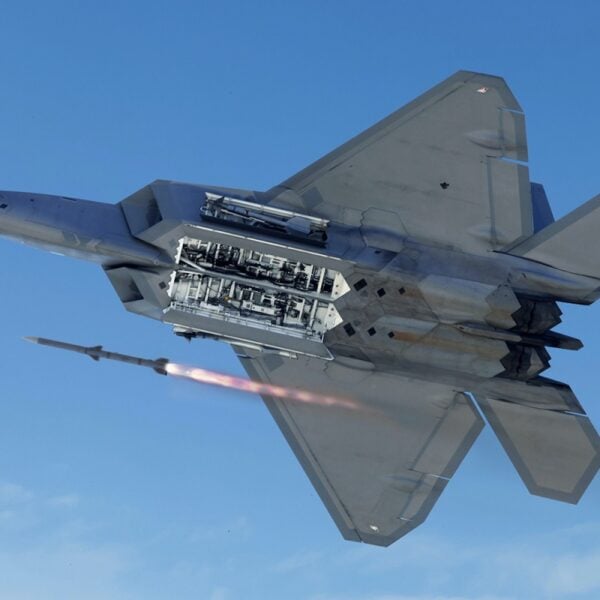The Potential Of Trump's F-55 And F-22 Upgrade Plans

Table of Contents
Understanding the F-22 Raptor and its Current Capabilities
The F-22 Raptor, a fifth-generation stealth fighter, represents a pinnacle of aviation technology.
Technological Advantages of the F-22:
- Unmatched Stealth: Its advanced stealth technology makes it incredibly difficult to detect by radar, providing a crucial advantage in engagements.
- Superior Sensors: The F-22 boasts cutting-edge sensors, allowing for superior situational awareness and targeting capabilities.
- Supercruise Capability: It can achieve supersonic speeds without using afterburners, extending its range and operational endurance.
Current Limitations of the F-22:
- Ceased Production: Production of the F-22 ended in 2011, leaving the US Air Force with a limited number of these aircraft.
- Evolving Threats: The emergence of advanced anti-aircraft systems and potential adversary air power necessitates upgrades to maintain the F-22's air superiority edge.
- Limited Upgrades: The existing fleet requires modernization to counter emerging threats. This includes upgrading avionics, weapons systems, and potentially incorporating new defensive technologies.
The need for F-22 modernization is not merely a matter of technological advancement; it's a critical response to geopolitical realities. Rival nations are rapidly developing their own advanced fighter jets and air defense systems, potentially diminishing the US's qualitative advantage in air superiority. The upgrades are therefore essential to maintaining the qualitative edge of this fifth-generation fighter in the face of escalating global military competition.
The Enigmatic F-55: Speculation and Potential
While the F-22 upgrade plans are concrete, the F-55 remains shrouded in mystery. There is currently no official confirmation of an F-55 program.
Analyzing the Rumors Surrounding the F-55:
The absence of official information hasn't stopped speculation. News outlets and defense analysts have floated various possibilities, often referencing leaked information or basing projections on broader technological trends. The discussions center around the development of a sixth-generation fighter designed to dominate the skies for decades to come.
Potential Features of a Hypothetical F-55:
If the F-55 were to become reality, it would likely incorporate several groundbreaking features:
- Artificial Intelligence (AI) Integration: AI could significantly enhance decision-making, target acquisition, and autonomous flight capabilities.
- Hypersonic Capabilities: The ability to travel at speeds exceeding Mach 5 would provide an unparalleled advantage in speed and maneuverability.
- Directed Energy Weapons: Laser or other directed energy weapons could offer a revolutionary approach to air-to-air combat.
These advancements, however, present significant engineering and logistical challenges. The development cost alone would be substantial, requiring careful consideration of economic feasibility and potential budgetary constraints. Such a project carries immense strategic implications, potentially reshaping global power dynamics and triggering a new arms race.
Trump's Proposed Upgrades: Budgetary Considerations and Strategic Implications
Trump's proposed defense budget played a significant role in shaping the plans for F-22 upgrades and potentially, the F-55.
Analyzing Trump's Defense Budget Allocations:
While specific figures may vary depending on the source, the allocation of funds to the F-22 upgrade program reflects a commitment to maintaining US air superiority. This financial investment signifies the strategic importance placed on modernizing existing assets.
Strategic Goals Behind the Upgrades:
The strategic context underlying Trump's proposed upgrades is inextricably linked to the geopolitical landscape. The rise of potential adversaries with advanced military technologies, such as Russia and China, necessitates a strong response. The aim is to ensure that the US maintains a decisive technological edge in air combat. This includes upgrading the existing F-22 fleet and potentially developing a next-generation fighter aircraft like the F-55 to maintain technological superiority and deter potential adversaries.
- Avionics Upgrades: Modernizing the F-22's avionics systems would improve its ability to process information, integrate new sensors, and engage targets more effectively.
- Weapons Systems Integration: Integrating advanced air-to-air missiles and other weaponry would further enhance the F-22's combat capabilities.
- Enhanced Situational Awareness: Improvements in sensor fusion and data processing will improve the pilot’s ability to understand the battlefield and respond effectively.
The impact of these upgrades on overall air dominance is profound. A modernized F-22 fleet, coupled with the potential development of an F-55, would significantly enhance the US Air Force's capabilities, bolstering national security and maintaining its position as a global leader in air power.
The Future of US Air Superiority – The Impact of F-22 Upgrades and Potential F-55 Development
The F-22 upgrade program and the potential development of the F-55 are pivotal to the future of US air superiority. While the F-22 upgrades address immediate needs by modernizing existing assets, the F-55 represents a longer-term vision, aiming to establish a qualitative leap in air combat capabilities. Both projects carry inherent challenges – budgetary constraints, technological hurdles, and the potential for escalating global military competition. However, the potential benefits – maintaining air dominance, deterring aggression, and protecting national interests – are equally significant.
Trump's fighter jet plans, focusing on the F-22 and the potential F-55, represent a significant commitment to maintaining US air superiority. While the feasibility and full strategic implications remain subjects of ongoing debate, the initiatives highlight the importance of continued investment in advanced aviation technologies to secure the future of US air power. We encourage you to delve deeper into this topic by researching related news articles, expert opinions, and analyzing the future of air superiority and the F-22/F-55 upgrade programs. Share your thoughts – what do you believe is the future of this critical area of national defense?

Featured Posts
-
 Watch Seattle Mariners Vs Chicago Cubs Spring Training Games Live Free Online
May 17, 2025
Watch Seattle Mariners Vs Chicago Cubs Spring Training Games Live Free Online
May 17, 2025 -
 Alcaraz Celebra Su Alegria En Montecarlo Analisis Del Torneo
May 17, 2025
Alcaraz Celebra Su Alegria En Montecarlo Analisis Del Torneo
May 17, 2025 -
 From The Closet To The Pitch Josh Cavallos Powerful Message
May 17, 2025
From The Closet To The Pitch Josh Cavallos Powerful Message
May 17, 2025 -
 Tokyo Real Estate Soundproof Apartments And Quiet Salons For Peaceful Living
May 17, 2025
Tokyo Real Estate Soundproof Apartments And Quiet Salons For Peaceful Living
May 17, 2025 -
 Podcast Production Revolutionized Ais Role In Processing Repetitive Scatological Texts
May 17, 2025
Podcast Production Revolutionized Ais Role In Processing Repetitive Scatological Texts
May 17, 2025
